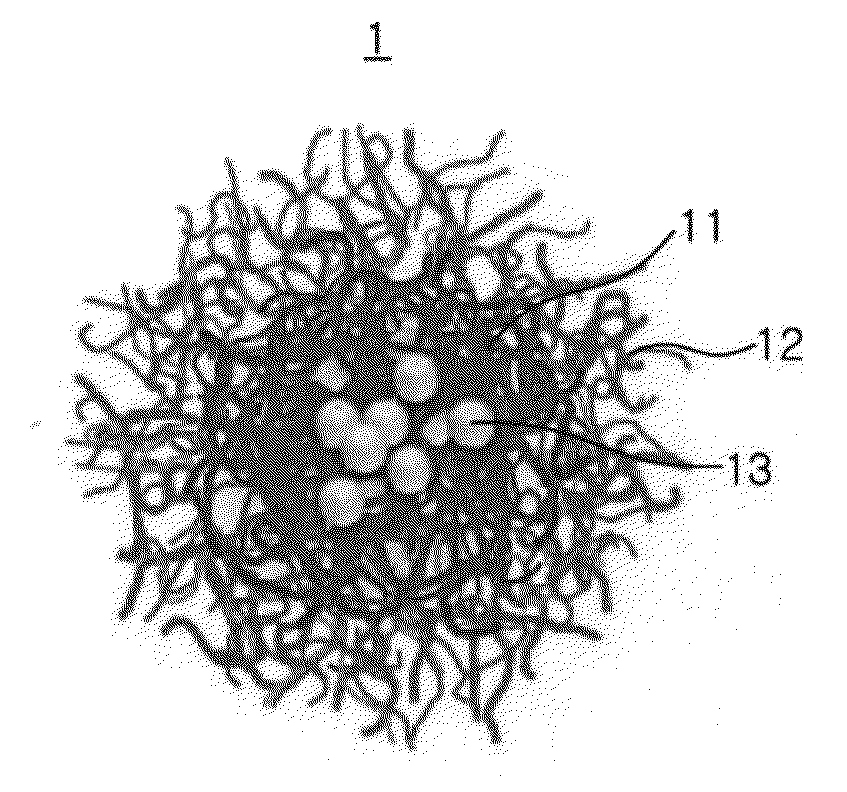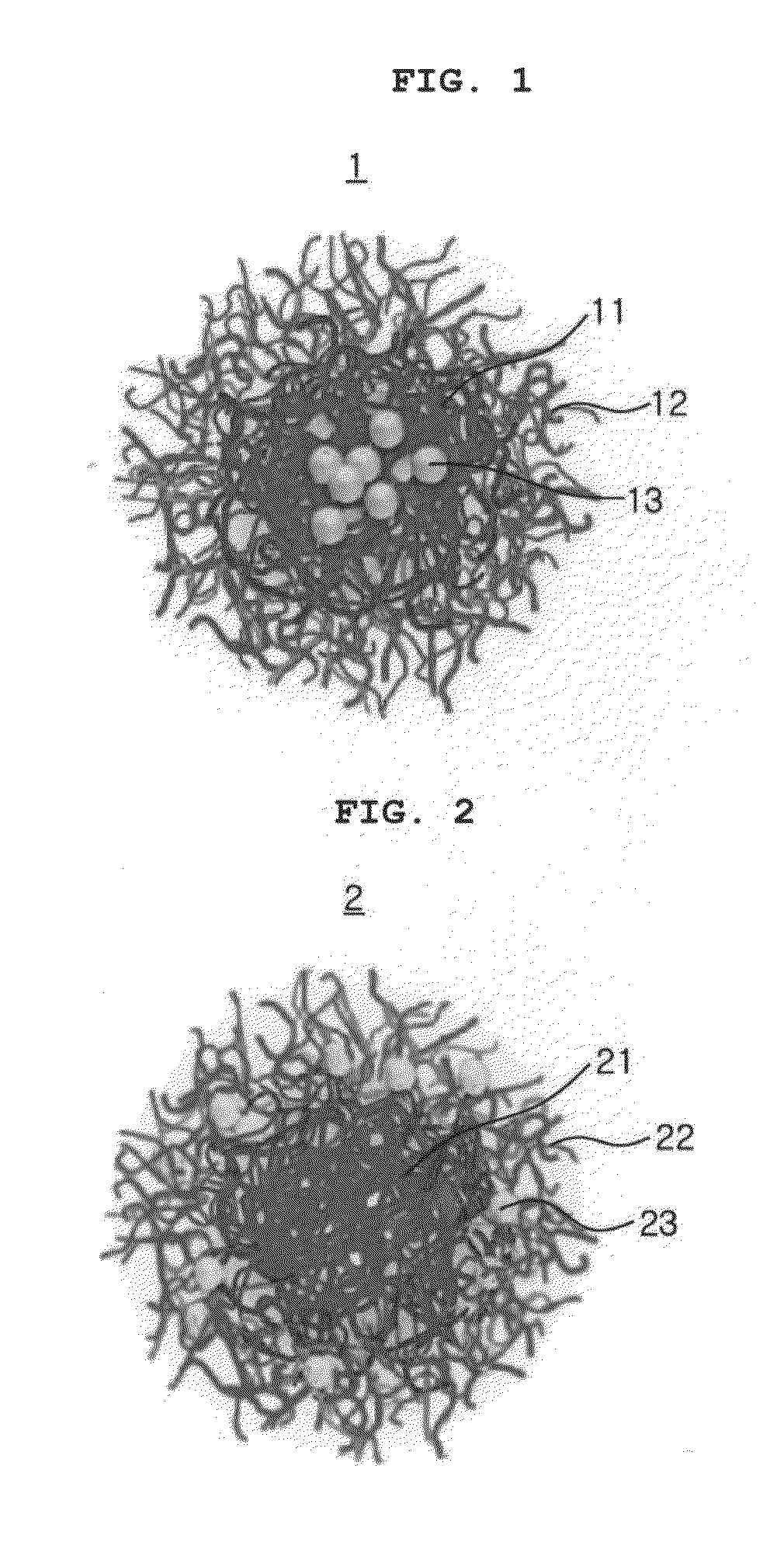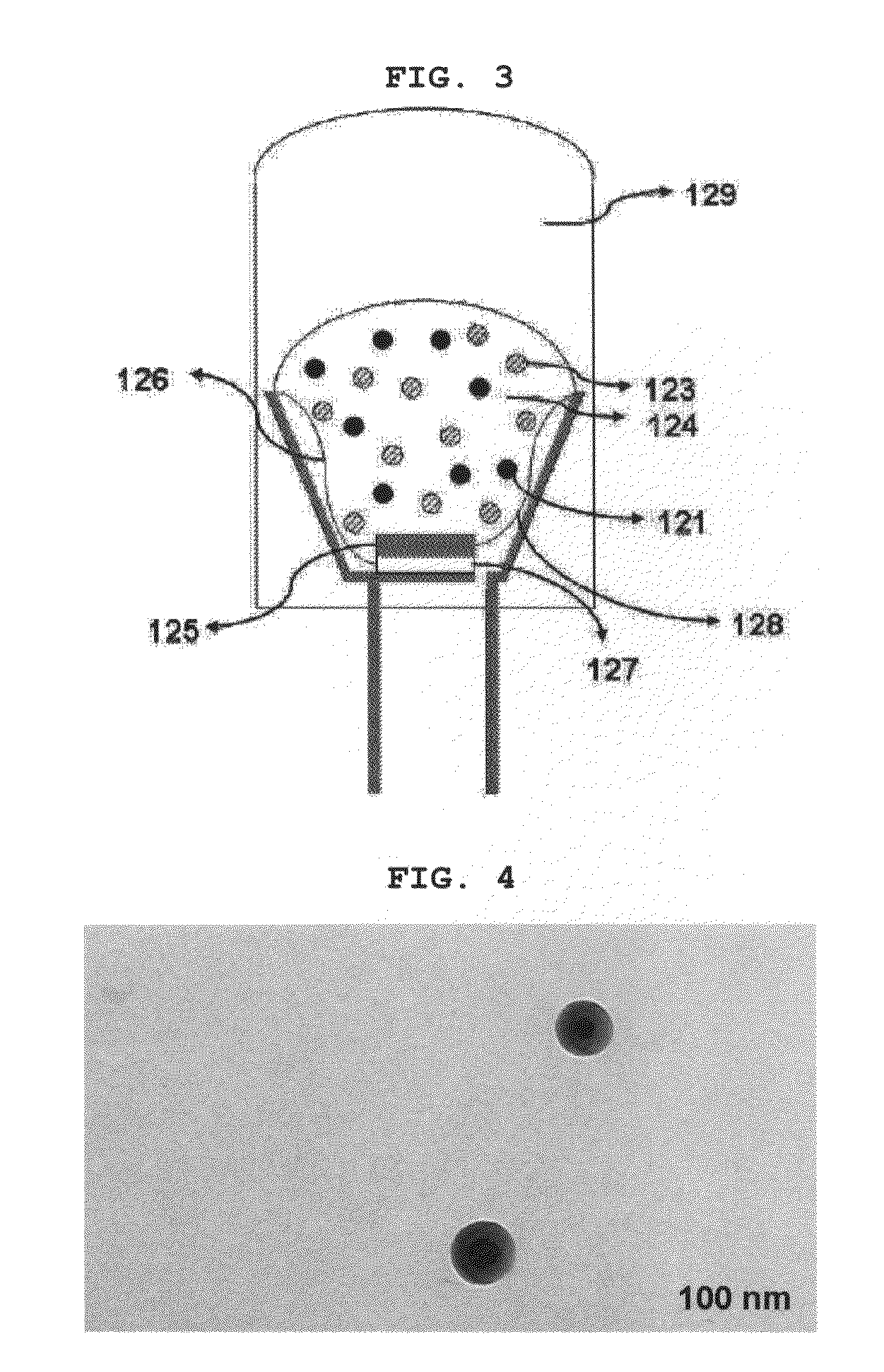Method for producing nanoparticle/block copolymer composites
- Summary
- Abstract
- Description
- Claims
- Application Information
AI Technical Summary
Problems solved by technology
Method used
Image
Examples
example 1
[0077]0.5 mg of PS-b-PEO as a block copolymer and 0.5 mg of CdSe / CdS / ZnS nanoparticles (diameter=5 nm) having oleic acid as an organic ligand are dissolved in 1 ml of chloroform (CHCl3).
[0078]After 20 ml of tetrahydrofuran (THF) is added to the solution, the chloroform is completely removed by evaporation with stirring until the final volume reaches 0.5 ml.
[0079]The resulting solution is stirred for 3 hours while 5 ml of distilled water is slowly added, to obtain nanoparticle / block copolymer composites. A transmission electron microscopy (TEM) image of the nanoparticle / block copolymer composites is shown in FIG. 4.
[0080]The optical properties of the nanoparticle / block copolymer (QD / BCM) composites and the CdSe / CdS / ZnS nanoparticles (QD) after storage in distilled water are measured by photoluminescence spectroscopy. The obtained spectra are shown in FIG. 5.
[0081]Referring to FIG. 5, the stability of the nanoparticles (quantum dots) supported within the block copolymer micelles of th...
example 2
[0086]0.5 mg of PS-b-PEO as a block copolymer, 0.5 mg of CdSe / CdS / ZnS nanoparticles (diameter=5 nm) having octanethiol as an organic ligand and 0.5 mg of Fe2O3 are dissolved in 1 ml of chloroform (CHCl3).
[0087]After 20 ml of tetrahydrofuran (THF) is added to the solution, the chloroform is completely removed by evaporation with stirring until the final volume reaches 0.5 ml.
[0088]The resulting solution is stirred for 3 hours while 5 ml of distilled water is slowly added to obtain nanoparticle / block copolymer composites. An electron microscopy image of the nanoparticle / block copolymer composites is shown in FIG. 8.
example 3
[0089]Hydrochloric acid is added to the solution prepared in Example 1, which contains the block copolymer (PS-b-PEO), the CdSe / CdS / ZnS nanoparticles (diameter=5 nm) and tetrahydrofuran, to obtain a pH of 4.
[0090]Next, 500 μl of tetraethylorthosilicate (TEOS) as a silica precursor is added to 1 ml of the pH 4 solution. The mixture is stirred for 48 hours.
[0091]After stirring, ethanol is added to the mixture and unreacted silica precursor is removed using a centrifuge, yielding nanoparticle / block copolymer composites having silica protective films on the surfaces thereof. An electron microscopy image of the nanoparticle / block copolymer composites is shown in FIG. 9.
[0092]The images of FIGS. 4, 8 and 9 show that the different types of nanoparticles are separately supported at desired positions within the block copolymers of the respective nanoparticle / block copolymer composites. In contrast, FIG. 7 shows that the nanoparticles are separated from the block copolymer of the nanoparticle...
PUM
| Property | Measurement | Unit |
|---|---|---|
| Diameter | aaaaa | aaaaa |
| Concentration | aaaaa | aaaaa |
| Weight ratio | aaaaa | aaaaa |
Abstract
Description
Claims
Application Information
 Login to View More
Login to View More - R&D Engineer
- R&D Manager
- IP Professional
- Industry Leading Data Capabilities
- Powerful AI technology
- Patent DNA Extraction
Browse by: Latest US Patents, China's latest patents, Technical Efficacy Thesaurus, Application Domain, Technology Topic, Popular Technical Reports.
© 2024 PatSnap. All rights reserved.Legal|Privacy policy|Modern Slavery Act Transparency Statement|Sitemap|About US| Contact US: help@patsnap.com










